A return to the mountains, the forests, and the chillier nights. This all happened in my excursion to Kedougou a town close to the Guinea border. Kedougou seemed to be the Portland of the United States for bicycles. Everyone has a bicycle and a rack to transport people, mattresses, laundry, goats, you name it they carry it on their bicycle. Not to mention much of the Kedougou market is dedicated to things like bike pumps, bike tires, and bling for bicycle spokes, bicycle seats, handlebars etc.
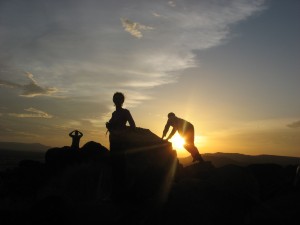
In other ways I also feel like the Kedougou area was a bit like the good ole PNW. First of there are mountains! So they are not the glacial carved beauties of my homeland but they can still get the heart a pumpin’. They are lush and green and form part of the border between Guinea and Senegal (see picture to the left). We hiked to the top of two mountains (each of which housed a small village) and hiked to one glorious waterfall. I LOVE FRESH WATER! No salt, cool temperature, no trash catching your leg, it was glorious.
I got to live in the most beautiful village in the world for three days. My village was on top of this mountain. The photo to the left is the sunset view just a little scramble above the huts I lived in. I was lucky to live with this small Bedick (ethnicity) Christian Animist village during the rainy season because in the dry season they have to carry water all the way up to their village at least once a day. I stayed on top of the mountain for three days but walked 30 minutes across the plateau to the fields every day.
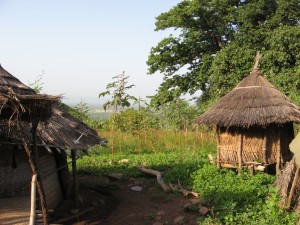
At the time I was in the village I was also reading a book called Ecotopia in which the Western states of the U.S. secede and create a self-sustainable land, no cars, no waste, and a love for the land. Sometimes I wondered if Ethwar (the village) would qualify as an ecotopia or just poverty. The fields of the village consisted of everything that the Bedick people ate. They sold none of it. Rice fields, corn fields, peanut plants, hibiscus used for juice and flavor not for beauty, papaya, lime, mango, pull-apart fruit, sugar cane, tomatoes, okra. As a result one day I had rice pudding with sugar for breakfast, rice and a green okra sauce for lunch, and rice with a peanut sauce for dinner. Occasionally there was warthog thrown in with the peanut sauce and as long as I didn’t get a bite of hide it was just fine. I began to realize that this is why my village father carried a gun everywhere he went, just in case he saw something that he could shoot for lunch. Houses were made of mud with straw roofs. Other huts were made with woven bamboo and sticks. They threw nothing away in fact they were happy to take my empty plastic Kirene water bottles to put things in. Even corn husks were used sometimes as scrubbies for dishes and at other times corn-husk dolls. Clothes were worn so many times that you could no longer see the infinite number of patches underneath the dirt. Although we may think that gross my environmental self wants to think of preserving of water. Goodness knows that it takes a lot more effort to wash clothes here than it does anywhere else.
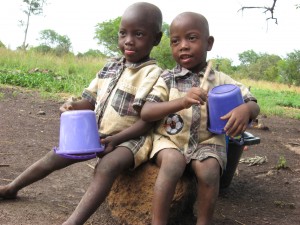
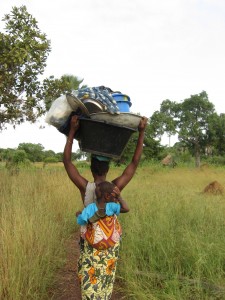
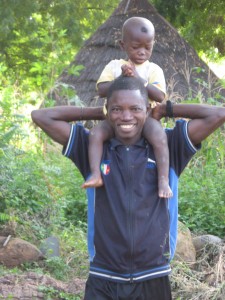
But I write this from my home-stay back in Dakar where the electricity has been amazing lately (I think it might have something to do with President Wade wanting to get re-elected contrary to the rest of the population of Senegal). My home-stay with a mother who comments favorably on the size of my friends’ bums, sisters who have persuaded me to let them give me hair extensions tomorrow, a cousin who speaks very very slow French with me, and a brother who just introduced me to Peter Gabriel. A home-stay that I am a bit sad to say I will be leaving in a week. But not before the big party of Tabaski where every family kills at least one goat and barbecues for the rest of the day. At least that is what I understand. We shall see soon enough!
